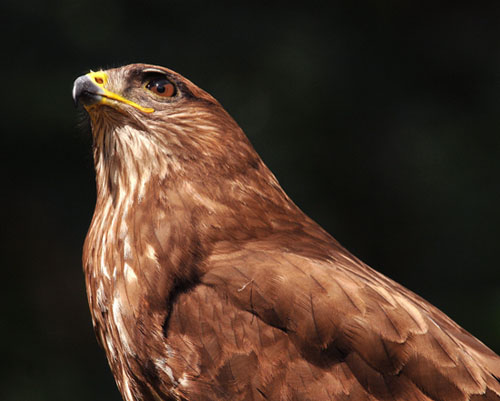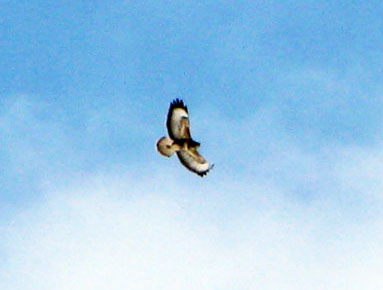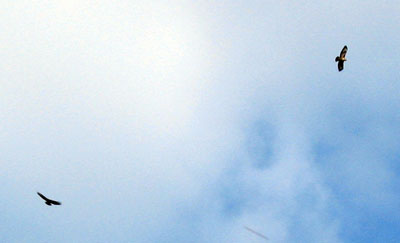
Photo: John Sheppard
BIRDS SEEN IN THE SULGRAVE AREA
(Home)
This is the first in an occasional series of articles on birds which can be seen in the Sulgrave area, either residents or visitors. The photos will be provided by former villager John Sheppard who now lives at nearby Greatworth (see John's pictures of the Canada Geese) with occasional contributions by other villagers. Text will be provided by George Metcalfe.
COMMON BUZZARD (Buteo buteo)

Photo: John Sheppard
Twenty years ago, to see a buzzard in the Sulgrave area would have been a rarity, but in recent times this bird of prey has seen a remarkable growth in its numbers – perhaps 50,000-plus pairs in the country as a whole. Once found almost exclusively in the partly-wooded valleys of the west and the north, it is now quite often seen in our parish, either perched in a tree or on a fence-post, or gliding quite high in the sky, seemingly effortlessly, like a small eagle. Sometimes three or more will be seen together (six have been spotted over the village), riding the thermals like glider pilots. You may then hear them calling to each other (“mewing”). Otherwise the buzzard’s flight is rather slow and laboured, with heavy wing-beats.

Photo: Clare Pollak
Unlike that of the re-introduced red kite, the spread eastwards of the buzzard is a natural process, but undoubtedly it is also partly because of a lessening of persecution, although even in these more enlightened days it is still the victim of illegal poisoning and shooting, especially on the shooting estates of the north. Admittedly, young game-birds do form a small part of its diet, but the buzzard is an opportunist; it will eat carrion, including road-kill; it is capable of killing adult birds such as crows and pigeons, but it will also eat small prey such as beetles and worms. However, its main victim is the rabbit. It was very noticeable that its population fell dramatically during the myxamotosis plague. Overall, therefore, it should surely be regarded as the farmer’s friend.
Buzzards usually nest in trees, in a bulky nest of twigs, bracken, moss and various other materials. The single brood can vary from one to five young.

Photo: Colin Wootton
A pair of buzzards circle over Barrow Hill